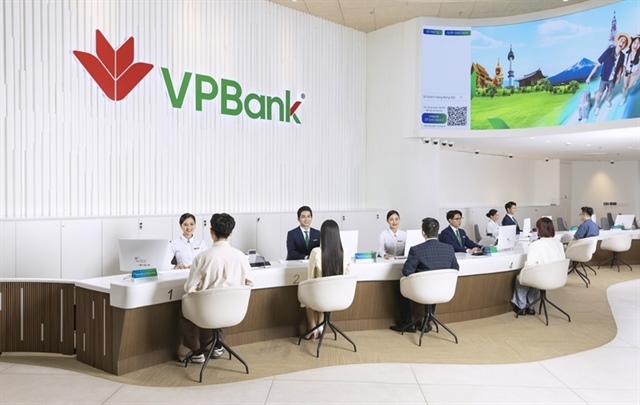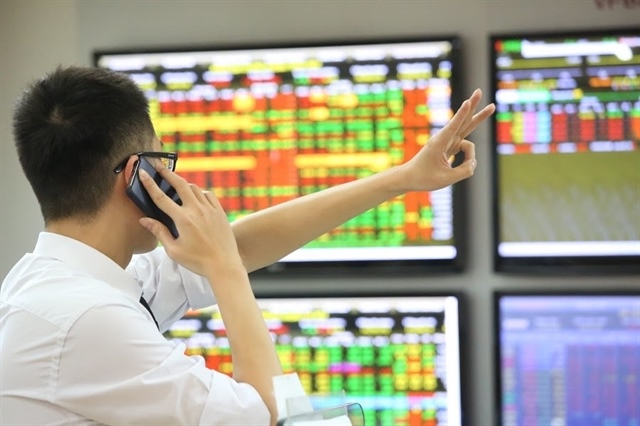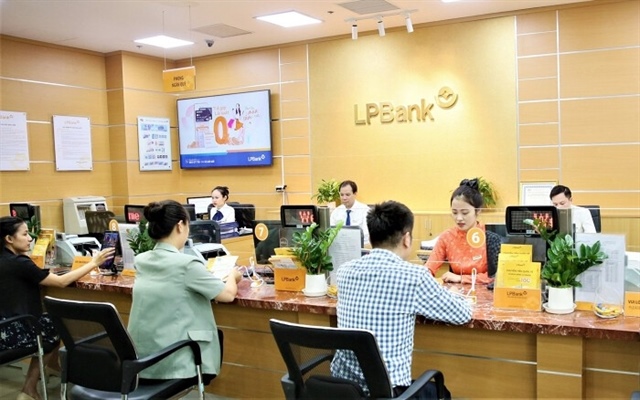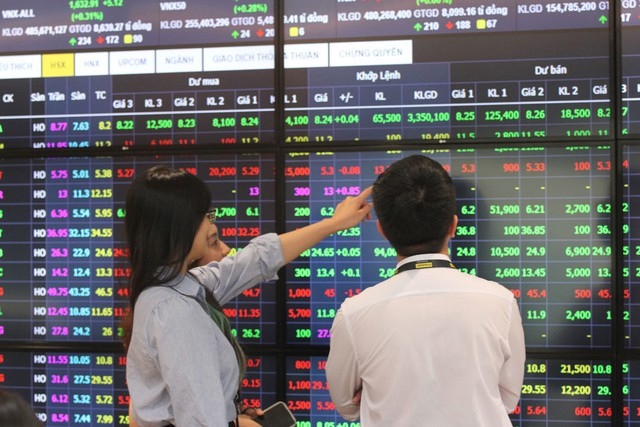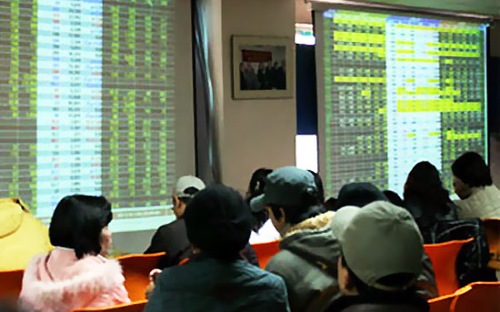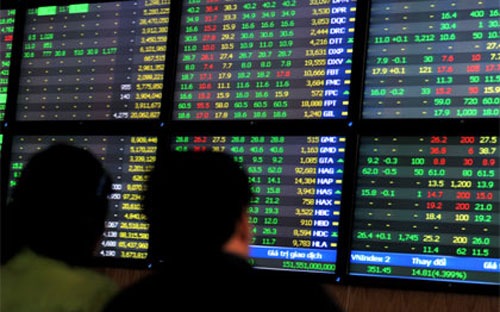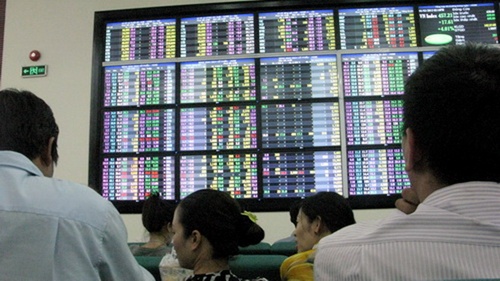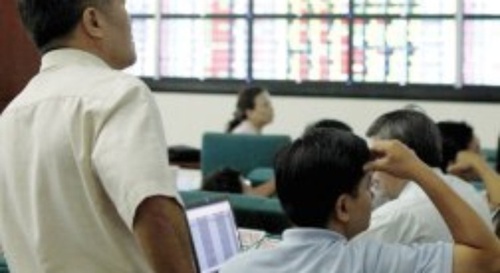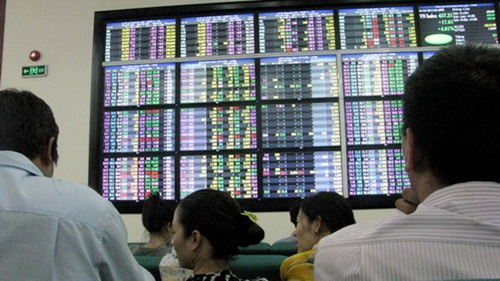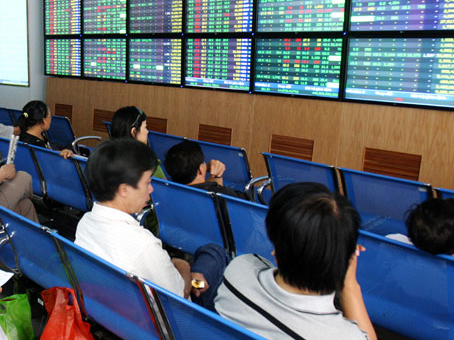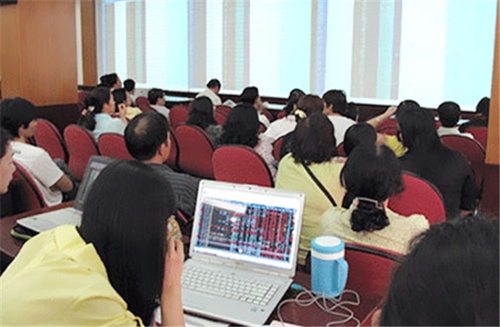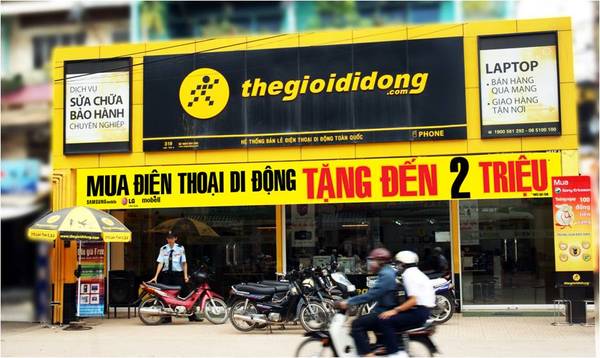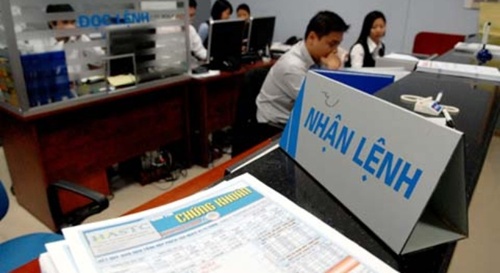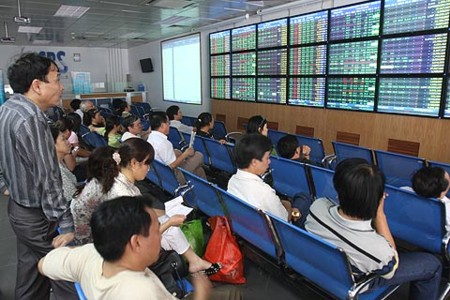Vietnam bank stocks trouncing Asia signal end of bad-debt crisis
Vietnam bank stocks trouncing Asia signal end of bad-debt crisis
Vietnam’s bank stocks are rallying at the fastest pace in Asia, signaling a recovery from the bad-debt crisis that’s weighed on economic growth for three years.

Joint-Stock Bank for Foreign Trade of Vietnam and the nation’s four other biggest lenders by market value have advanced an average 23 percent during the past three months, the most since 2013 and twice as much as the regional mean. Nonperforming debt at the nation’s banks dropped to about 3.25 percent at the end of 2014 from 17 percent two years earlier, government data show.
Confidence in Vietnamese lenders is increasing after the nation’s state-backed asset management company bought 123 trillion dong ($5.7 billion) of troubled loans, real estate transactions in Hanoi doubled from a year earlier in February and the government encouraged mergers to strengthen the financial system. The banking industry’s rebound helps pave the way for a revival in growth that PricewaterhouseCoopers LLP estimates will make Vietnam one of the world’s fastest-expanding economies through 2050.
“Banks have bottomed out,” said Bill Stoops, the Ho Chi Minh City-based chief investment officer of Dragon Capital Ltd., which oversees $1.3 billion. Lenders “will do better as the property market has recovered and the economy generally is recovering too. NPLs have been slowing down, so banks will be able to lend more to help the economy grow.”
‘Very cheap’
Shares of Military Commercial Joint Stock Bank, the sixth-largest publicly-traded bank, and Asia Commercial Bank, the seventh largest, are still “very cheap,” Stoops said.
After racking up Southeast Asia’s highest ratio of bad debts, of which a third were tied to soured property loans at the end of 2012, banks are starting to clean up their balance sheets.
The Vietnam Asset Management Co., set up by Prime Minister Nguyen Tan Dung’s administration in July 2013, has bought loans from almost 40 banks since its inception and plans to boost debt purchases to about 200 trillion dong by the end of 2015.
Hanoi, Vietnam’s capital, recorded about 1,200 real estate transactions in February, more than double the amount a year earlier, while sales tripled to 1,100 in Ho Chi Minh City, according to the Vietnam Real Estate Association. Property loans totaled 299 trillion dong as of Oct. 31, up 14 percent from the end of 2013, according to data from the ministry of construction.
Forced mergers
The State Bank of Vietnam has pledged to accelerate the restructuring process by forcing some lenders to merge and others to go bankrupt. The monetary authority plans to reduce the total number of banks from 40 to as few as 15 by 2017.
The central bank has predicted six bank mergers this year and gave in-principle approval for the combinations of Saigon Thuong Tin Commercial Joint-Stock Bank and Southern Commercial JSB, along with Maritime Bank and Mekong Housing Bank, to take place this year.
“There is no longer systemic risk in the banking system,” said Long Ngo, a Ho Chi Minh City-based research manager at Viet Capital Securities, the nation’s third-largest brokerage. “If you are already sufficiently weighted in consumer stocks, the next-best exposure to a growing Vietnam is the banking sector.”
Vietnam’s government is targeting gross domestic product growth of 6.2 percent this year, up from 5.98 percent in 2014. The country’s annual real GDP expansion could average 5.3 percent in the 2014-50 period, a pace only bettered by Nigeria, according to PwC.
Lingering risks
The Southeast Asian nation has increased its appeal as a manufacturing alternative to China, with disbursed foreign investment climbing 7.4 percent last year to $12.35 billion. It’s also the biggest exporter to the U.S. from the Association of Southeast Asian Nations, or Asean.
Risks for Vietnam’s banks remain. While Moody’s Investors Service raised its outlook for the industry to stable from negative in December, the ratings company warned that profits will stay “under pressure” given weak demand for new loans and prospects for a decline in net interest margins.
Banks’ ability to absorb losses is probably lower than reported because the level of bad debt has been understated, Fitch Ratings said in a report this month.
“We’ll look at banks, but we will be a little careful,” said Dennis Lim, a Singapore-based money manager at Templeton Emerging Markets Group, which oversees about $40 billion. “We want to make sure that the balance sheets of these banks properly reflect the problems of the recent years.”
Recovery path
The stock market is signaling banks are already on the recovery path. Shares of Bank for Foreign Trade of Vietnam, the country’s biggest-listed lender known as Vietcombank, have advanced 17 percent in the past three months. Vietnam Joint-Stock Commercial Bank of Industry and Trade, known as VietinBank, has surged 28 percent.
That compares with a 6.2 percent increase in the benchmark VN Index and a market-capitalization weighted average increase of 11 percent for regional peers. The VN Index fell 0.6 percent to 564.03 at 9:48 a.m. local time, heading for the lowest close since Feb. 4.
VinaCapital, Vietnam’s biggest money manager, is considering adding to holdings of banks because of the improving property market and attractive valuations. The nation’s five-biggest listed lenders trade at an average level of 1.4 times net assets, versus 1.7 for Southeast Asian peers, according to data compiled by Bloomberg.
“It’s a good time to invest,” said Andy Ho, who oversees $1.5 billion as the managing director of VinaCapital in Ho Chi Minh City. “A combination of growth and attractive valuation exists today.”


